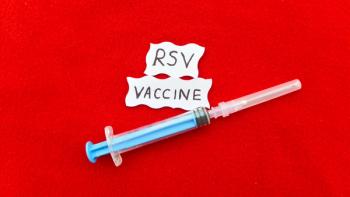
DNA Scrunchworm Model Could Lead to New Antiviral Drugs
A new model finds that a scrunching motion is needed to package DNA into a capsid.
Findings from a recent study suggest that DNA “scrunching” could potentially lead to new antiviral drugs.
Researchers in the study, published in The Journal of Physical Chemistry B, suggest that DNA goes through a cycle of contractions and elongations to create forces needed for replication, called DNA “scrunching.”
Viruses take over the host cell to make copies of their genetic material, and build capsids to hold their DNA or RNA. Researchers believe that the “scrunching” is needed to drive DNA into a virus during replication.
Researchers in the study suggest that proteins could create a cycle of DNA dehydration and rehydration. Since the dehydration shortens and rehydration lengthens, the researchers proposed that the cycle of shortening and lengthening could be used as a DNA-protein grip-release cycle to generate forward motion.
Researchers call this the scrunchworm model.
"For some time now, we have been contemplating how viral DNA gets into the capsid so that one day we can block this step as a way to halt infection," said lead researcher Stephen C. Harvey, PhD.
The scrunchworm model was tested in simulations by examining DNA packaging in phi29, a virus that infects bacteria similar in structure to the herpesviruses, where an empty capsid is formed and then DNA is packaged by a motor protein on the capsid, according to the study.
Researchers found that when DNA interacts with the phi 29 connector proteins, the DNA started a scrunching motion without any manipulation from protein levers.
This model is currently being tested in other research groups to test new predictions about the model. The researchers will pull on the tail of DNA while it is being packaged.
They hypothesize that DNA with different sequences create different amounts of force, and DNA/RNA inserts will not be packaged.
"Even if these experiments disprove the scrunchworm model, they will provide information that will help us figure out how these motors work," Dr Harvey concluded. "The purpose of modeling is to drive experiments and simulations that advance our understanding, regardless how they turn out."
Newsletter
Stay informed on drug updates, treatment guidelines, and pharmacy practice trends—subscribe to Pharmacy Times for weekly clinical insights.




















































































































































































































